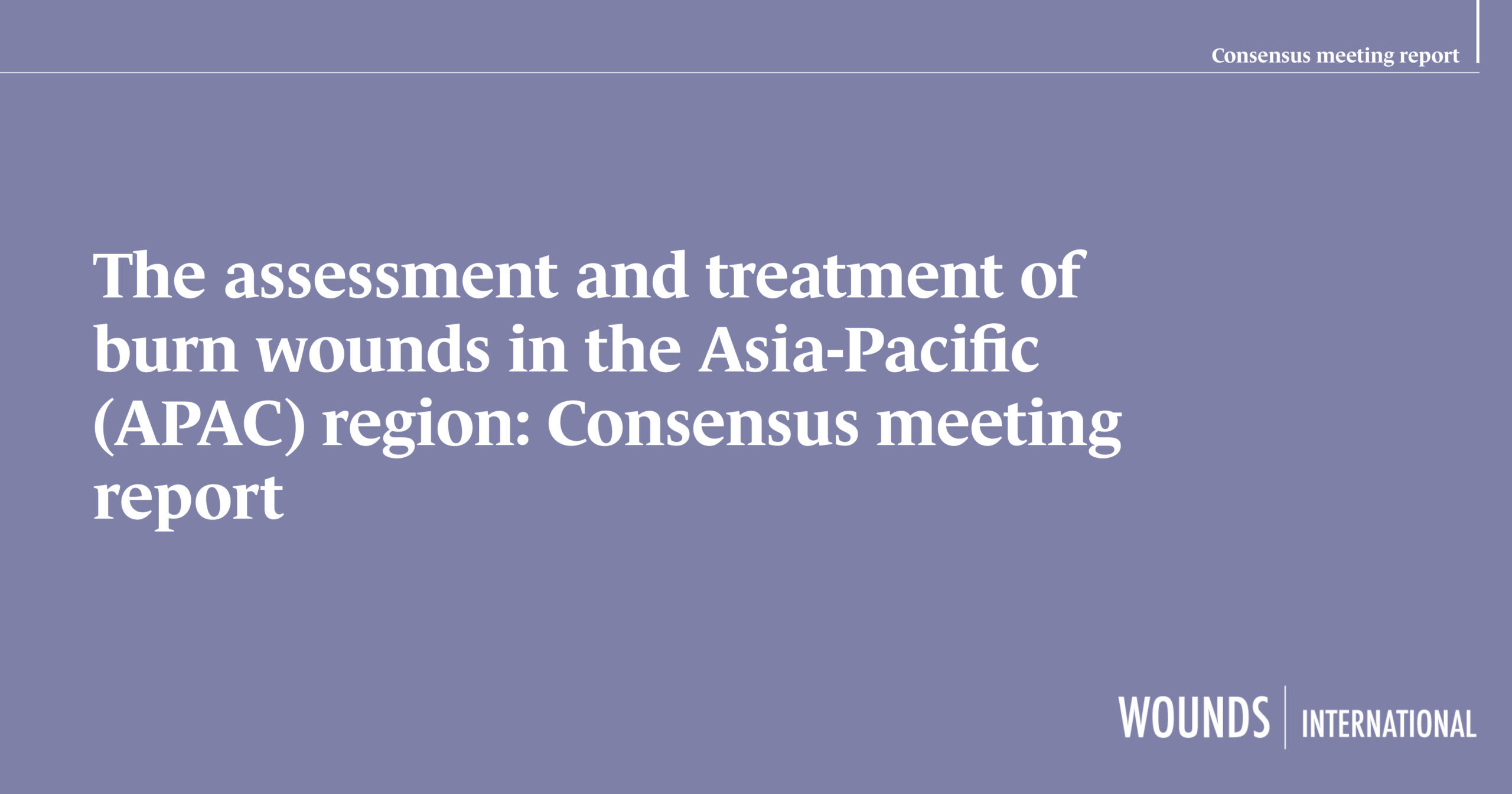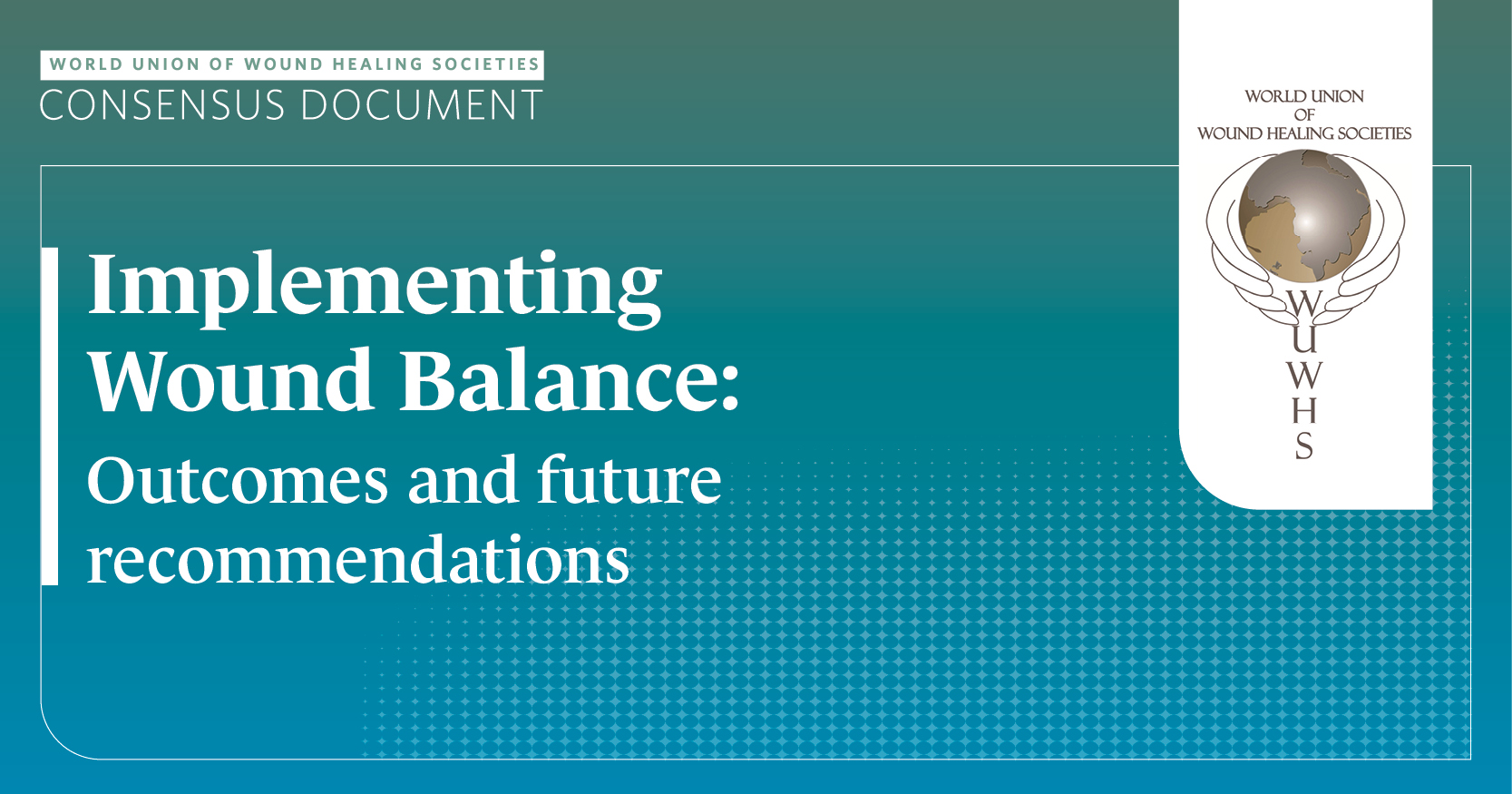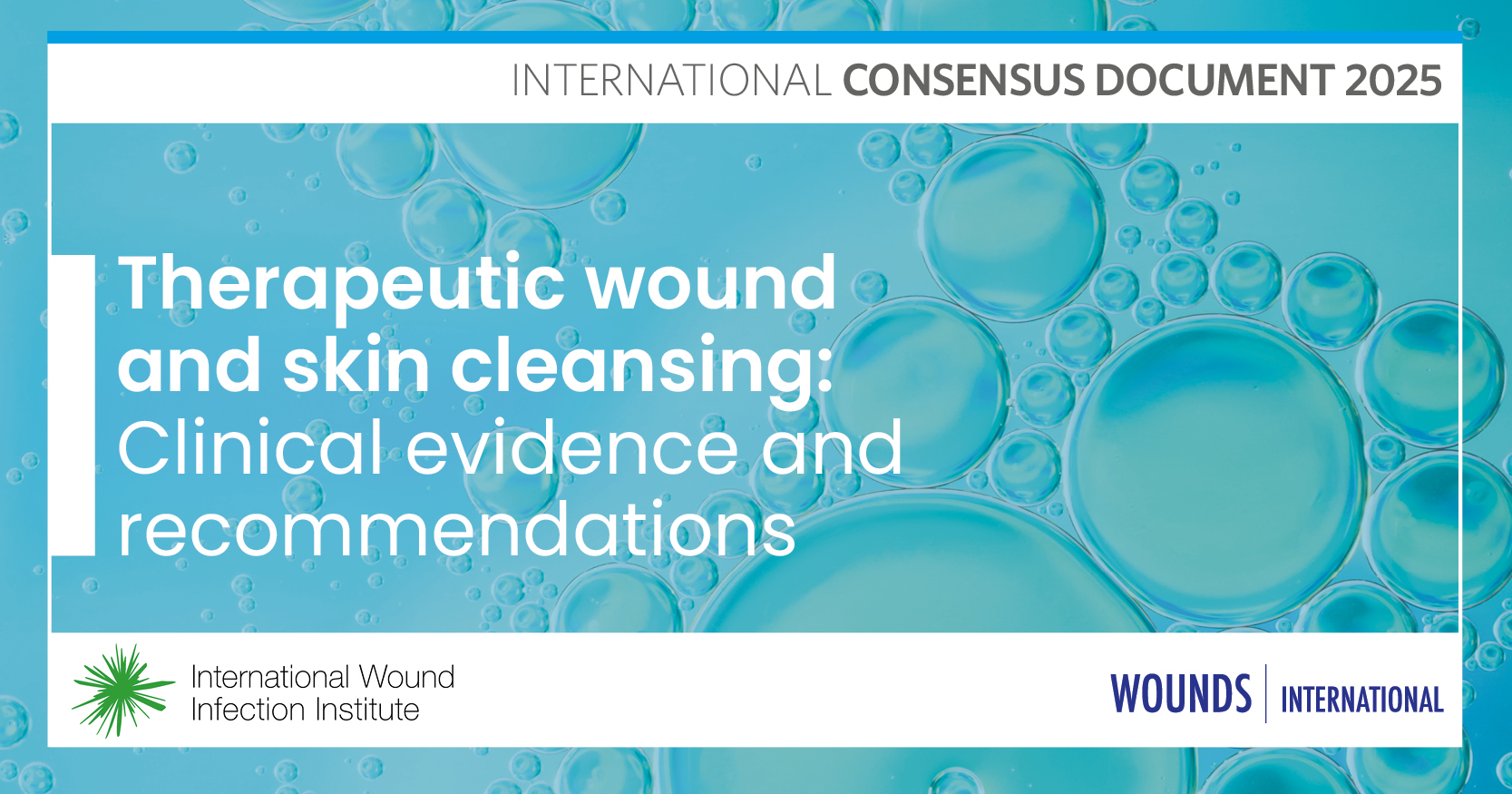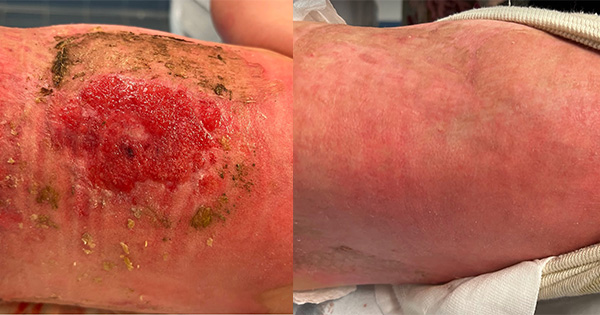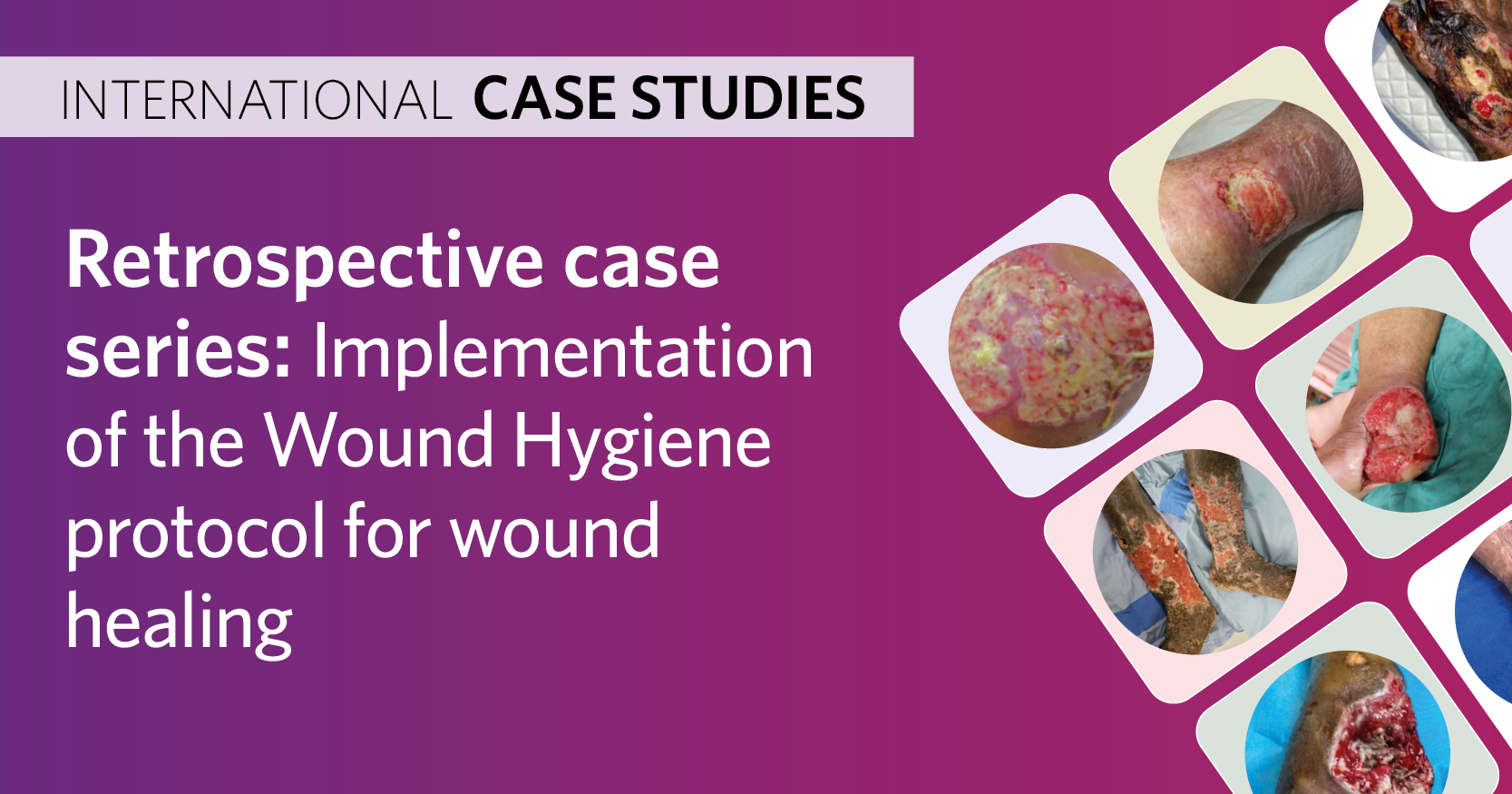The treatment of burn wounds requires specialist, multidisciplinary care. Burn wounds must be managed carefully to avoid adverse outcomes such as scarring, contractures and keloid scarring. Large or deep lesions require careful monitoring alongside complex and strategic treatment approaches (Hermans, 2019). The management of burn wounds is important for the prevention of further complications, which may lead to increased morbidity and mortality (Radzikowska-Büchner et al, 2023).
Patients with extensive burns are particularly susceptible to serious complications, such as sepsis, while bacterial contamination of the burn wound itself can lead to the development of biofilm, which prolongs treatment and significantly delays the wound healing process (Markiewicz-Gospodarek et al, 2022). Pain management is another critical aspect of care, both following the initial injury and throughout the wound healing process, with special attention required during dressing changes. Additionally, patients with severe burns require metabolic and nutritional support to promote optimal healing (Jeschke et al, 2020).
Whilst burn wound management has improved significantly in recent decades, the treatment of burns remains challenging and often requires longer hospital stays (Radzikowska-Büchner et al, 2023). Additionally, there is still no standardisation in the classification, surgical treatment or infection management of burn wounds, although some clinical consensus has been reached (Ji et al, 2024).
Almost half of all global burn cases occurred in Asia in 2019, with the highest numbers of recorded burn injuries documented in China and India (Collier et al, 2022). The burden of this wound type and accompanying issues, such as limited access to care and economic challenges, has resulted in significant difficulties for burn wound management in the region (Collier et al, 2022).
The APAC Burns Peer-To-Peer Network is a regional network of burn specialists with an initiative to consolidate expert opinions on burn wound management and translate related clinical evidence into practice and implementation.
The expert panel convened to gather insights and recommendations for developing a consensus document to support healthcare practitioners in the local assessment and treatment of burn wounds. The aim of the panel discussion was to identify opportunities for improving the quality of burn wound care delivery, including the standardisation of protocols, benchmarking of outcomes and the implementation of best practices.
Methods
The following topics were selected as discussion points at the expert panel meeting:
Gaps and challenges
- What are the current challenges in burn wound care in clinical practice in your countries?
- Could you provide insights into how individuals facing burn injuries can access necessary treatments and therapies, particularly in relation to financial concerns?
- What are the current disparities in access to specialised burn care facilities, especially in developing countries?
Outcome indicators in burns wound management
- How do you measure outcomes in burn wound management?
- How do you assess effective burn healing?
- How do you measure patient satisfaction/experience?
- What predictive indicators and measures can be used to determine the mortality risk?
Clinical management of burn wounds
- While silver sulfadiazine (SSD) has been a standard treatment for burn wounds, it may have limitations and potential drawbacks, such as delayed wound healing, cytotoxicity and concerns regarding resistance. With alternative options that offer comparable or superior outcomes without these drawbacks, how should we explore transitioning away from SSD to ensure the best possible care for our patients?
- How can we effectively implement this transition while ensuring seamless continuity of care and education on the new protocols?
- What is an ‘ideal dressing’ for burns? What are the characteristics of an ideal wound dressing for partial-thickness burns, donor sites, or graft management?
- What cleansing properties should be considered for burn wound cleansing, and how crucial is it for the cleansing solution to have antimicrobial properties?
- What is the role and position of advanced wound care in burn management in order to improve patients’ quality of life and support the economic healthcare system in the future?
Expert opinion
Challenges in burn wound management
Challenges identified by the panel included economic constraints and limited access to specialist burn facilities, often leading to disparities of care, particularly for patients located in rural areas. A lack of training and a shortage of qualified burn surgeons was highlighted as particular issues. The value of outcome measures such as predictive indicators of mortality, time to wound healing and patient satisfaction, was debated. Burn wound care management strategies, such as the selection of appropriate wound dressings at each stage of the wound healing process, were discussed.
Economic challenges leading to disparities in treatment options are a common problem in many countries in the APAC region. Patients from poorer regions are often treated in government or public hospitals. Burns treatment in these institutions is funded by the government and is free to patients. However, access to advanced treatment options, particularly for complex burn cases, may be restricted. In private hospitals, funded by private or employment-based insurance, patients receive a higher standard of care with access to advanced dressings and specialised treatments. In countries like China and India, economic pressures are compounded by the increased number of severe burns patients.
Access to specialist burn treatment centres is often limited, primarily due to geographical barriers. In most countries represented, these centres are concentrated in urban areas, leaving smaller district hospitals in rural and remote regions without expert burn care facilities. This lack of specialised primary care is reported to contribute to increased morbidity and mortality rates. For example, in some countries such as Vietnam, there is a reported continued reliance on traditional remedies, with patients not understanding the implications of delayed wound healing. Consequently, patients are often transferred to larger burn care centres only after significant delays, by which time burn wounds are more likely to be infected. These delays necessitate more complex interventions and increase the risk of complications, such as severe scarring.
In China, the trend towards regionalisation of burn treatment is evident, with more severely burnt patients being referred to regional burn centres for specialised care. In Singapore, resources in large burn units can be under pressure due to the admission of patients from neighbouring countries. In Australia, major burn centres are located in urban areas, where burns are treated regardless of the size or complexity of the wound. Residents of Australia’s regional capitals, including Melbourne, Sydney, Brisbane, Perth, Adelaide, Hobart and Darwin, have access to specialised burn centres with excellent first aid, advanced dressings, and treatment from burn specialist surgeons. However, the greatest challenge in Australia remains providing specialist burn care across its vast geographical area.
In contrast, Japan has numerous burn facilities, a universal health insurance system, and easy access for patients. However, there are challenges associated with a lack of centralised care. The panel agreed that educating staff nationwide to provide more effective primary burn care in remote areas could help prevent early complications. Training district surgical staff by burn specialists was suggested as a potential solution to address limited patient access to specialist centres. This approach would allow larger specialist burn centres to prioritise the most severe and complex cases.
The panel representatives reported a shortage of specialised burn surgeons. Surgeons treating burn patients are often plastic surgeons, who also manage reconstructive and aesthetic surgeries. In Japan, the number of burn cases is increasing due to factors such as abuse and an ageing population, yet the number of board-certified burn surgeons is declining. The panel discussed the potential of combining burn specialisation with plastic surgery to increase recruitment. They also highlighted the importance of supporting occupational therapists and physiotherapists in training for burn care and rehabilitation.
Discussion of the availability of skin bank facilities highlighted that many countries are experiencing a decline in the number of skin donors. An exception to this trend was Thailand, where cadaveric skin is readily available due to the high rate of organ donation following death in this predominantly Buddhist country. Similarly, Singapore is self-sufficient in cadaveric skin through programmes that promote organ donation awareness among families. The critical need for cadaveric skin to cover large-area wounds during the initial weeks following injury was emphasised. In Malaysia, skin is obtained from European skin banks due to the absence of a national skin bank, but cost limitations restrict the number of patients receiving skin allografts. In Western Australia, cadaveric skin is not used, primarily due to the isolation of many regions and the availability of effective alternatives.
The panel highlighted that there are no specific guidelines for burn treatment. While some countries have attempted to establish standard protocols, they face challenges in disseminating these protocols across all hospitals nationwide.
Outcome measures
Outcome measures routinely used in most countries include time to complete wound healing, patient satisfaction scores, pain assessments (particularly during or after dressing changes), and the psychological and social recovery of patients post-injury. Occupational therapists and physiotherapists typically perform rehabilitation outcome measures, such as validated scar assessment and quality of life evaluations. In China, the protocol includes a detailed assessment of outcome measures, including quality of life, hospital admission and level of functional recovery. Additionally, the patient’s psychological status and socioeconomic outcomes, such as the impact of treatment on the patient’s family, are also recorded.
The panellists agreed that defining outcome measures for burn wound management is complex and challenging due to the varying nature and complexity of burn injuries. While time to wound healing is perhaps the most critical outcome measure (reduced healing time results in better scar outcomes), it is not easily defined. Wound healing may be defined as the date of wound closure or the time taken for the patient to return to normal daily activities or work. The definition is further complicated by wound healing regressions that may occur when patients return to normal daily activities. The panellists determined that the standardisation of outcome measures may be difficult due to the number of factors to consider, such as long-term consequences of burn injuries, development of debilitating contractures, and amount of recovery of range of motion. They agreed that an element of independence in assessments (i.e. quality of life assessments performed by allied health professionals) added value in reducing surgical bias.
Outcome measures, such as predictive indicators of mortality, were used more routinely in some countries than others. In Australia and Malaysia, mortality measures are not used; instead, teams will attempt to save as many patients as possible while also considering the importance of quality palliative care. In other countries, the Prognostic Burns Index is used as a tool when talking to patients’ families about possible survival outcomes, although it is not used to guide wound management decisions. Some countries have also highlighted litigation concerns, where members felt that predictive mortality indicators could help facilitate discussions with families in complex cases.
In India, the challenge of treating burn patients in public hospitals is exacerbated by the country’s large population, requiring careful consideration of how best to allocate resources effectively. Meanwhile, in Malaysia, outcome measures include weekly infection cultures for significant burn injuries and monitoring septic parameters, such as total c-reactive protein, procalcitonin, and serum lactate.
The panel agreed that patient satisfaction is difficult to measure as different patients will have different pain thresholds and a different ability to return to normal daily activities, even with the same type of injury. In Thailand, pain assessment is a key outcome measure, with nurses scoring pain daily after a dressing change. These assessments are conducted for the first two weeks to assess wound healing and help identify patients who may require more intensive treatment or adjustments in the selection of appropriate wound dressings. In Singapore, general anaesthetics are routinely used during dressing changes to minimise discomfort. All panellists agreed that prioritising patients’ mental wellbeing could make a positive difference to the patient’s overall experience.
Overall, the panel agreed that pain scoring can be an objective measure and can guide improvements in best practices, particularly during the post-healing phase. They noted that increases in patient satisfaction are often closely linked to effective pain management. The panel discussed the importance of access to patient support groups for burn survivors due to the psychological burden of burn injuries and difficulties in reintegration into society. Additionally, the panel determined that standardised outcome measures would help medical professionals to decide on the best treatment options.
Practical management of partial-thickness burns
The use of SSD in burn wound care was a key topic of discussion among panel members. In countries such as China, Vietnam and India, SSD remains widely used due to its perceived efficacy and cost-effectiveness. In Vietnam, SSD is readily available both by prescription and over the counter. This topical treatment is commonly used in provincial burn facilities to manage partial- and full-thickness burns until skin grafting is considered necessary.
Although SSD is considered an economical choice, it is also associated with complications such as pain. In India, there was recognition that, for SSD to be effective, it must be applied once or twice a day with associated dressing changes. The panel raised concerns about the increased risk of cross-contamination due to the high frequency of dressing changes.
Where finances allow, the panel agreed that silver-containing dressings are more effective alternatives than SSD and reduce the rates of wound infection significantly. An ongoing study in India evaluating Mepilex® Ag (silver-containing absorbent foam dressing) observed that wound infection rates are reduced. Additionally, dressing changes are only required every seven days, with patients reporting less pain during these changes.
Countries such as Malaysia and Australia have largely moved away from using SSD on a large scale. In Malaysia, only select centres continue to use SSD, as modern dressings are widely available and considered more effective.
Collagen sheets are commonly used for treating facial burns and burns on extremities.
In Australia, SSD is no longer used due to the requirement for twice-daily dressing changes. Instead, silver-containing dressings are standard practice regardless of the burn size or severity, due to their effectiveness in preventing infection.
In many countries, SSD is reserved for specific cases only, for instance highly contaminated areas like the perineum or for deep wounds that cover extensive areas. In other countries, particularly Thailand, SSD creams and ointments are often used for smaller burns, where patients prefer the use of ointments over dressings, as they accommodate frequent showering.
All panel members agreed that they would prefer to use advanced dressings, such as Mepilex® Ag if there were no financial implications.
The panel highlighted that the ‘ideal dressing’ is dependent on the type of wound and its healing stage. For wounds in the early stages of healing that are highly exuding, some panellists recommended highly absorbent silver-containing fibre dressings. As the wound progresses and exudate decreases, less absorbent foam dressings may be more appropriate. Ideal properties of a dressing for burn wounds are summarised in Box 1.
Mepilex® Ag received particular recommendation because it adheres gently, absorbs exudate and delivers silver to the wound, thereby reducing infection. It was highlighted as particularly useful for paediatric patients due to the reduced pain reported on dressing removal. It was also agreed that the use of silver-based dressings generally resulted in lower infection rates in burn patients.
Wound cleansing
Variations in wound cleansing agents were noted among panellists. The choice of cleansing solution varies according to the severity of the wound. All acknowledged that the risk of infection increases in late-presenting or more severe burn wounds. For first- and second-degree burns treated early, mild irrigation solutions, such as saline, aqueous chlorhexidine, or solutions preserved with hypochlorous acid (HOCl) and sodium hypochlorite (NaOCl), can be used for cleaning, moistening, and rinsing.
In contrast, severe or chronic burns with a high infection risk are commonly treated with higher-concentrated antiseptic cleansing agents, such as HOCl/NaOCl solution, polyhexamethylene biguanide (PHMB), or low concentrations (less than 5%) of povidone-iodine (PVP-I) (Kramer et al, 2018). However, PVP-I is not recommended for use on children under two years of age or on burns covering more than 10% of the body surface area.
Conclusions
The challenges of burn wound care across the APAC region include financial constraints on both states and individuals, lack of infrastructure and access to specialist burn facilities, leading to disparities in care quality.
There are inadequate skin donors and a shortage of highly trained burn surgeons. To improve patient care, there is a clear need for standardised protocols and guidelines for burn wound management. Collaboration among policymakers, healthcare professionals, and non-governmental organisations is essential to address these challenges and ensure more equitable and effective burn care.
Outcome measures, such as predictive indicators of mortality, time to wound healing, and patient satisfaction, are used in some countries. However, there would be significant benefit in standardising these measures to enable objective assessment. Patient education, support, and counselling are also important, particularly during the post-wound healing stage.
Burn wound care management strategies including the use of wound irrigation solution and selection of appropriate wound dressings at each stage of the wound healing process, are critical for promoting optimal healing conditions. The importance of empathetic and informed decision-making in burn wound care is paramount, with a strong focus on giving patients and their families a voice throughout the process.
Recommendations
- Development of treatment guidelines for dedicated burn units and the standardisation of burn wound management protocols
- Train district surgeons in primary first aid for burn wounds and burn wound management to enable specialist centres to focus on more complex cases and reduce the burden on referral systems
- Consider implementation of standard outcome measurements
- The medical community should advocate for resource allocation to burn care services, urging policymakers in respective countries to prioritise funding and infrastructure development for burn management.

